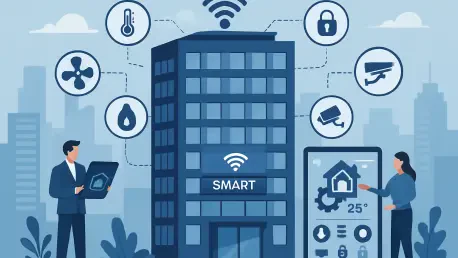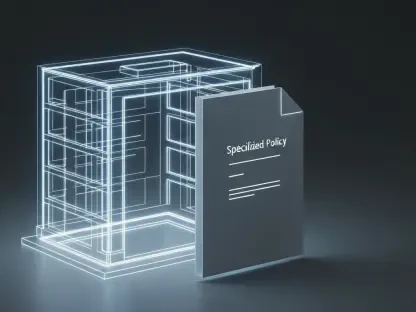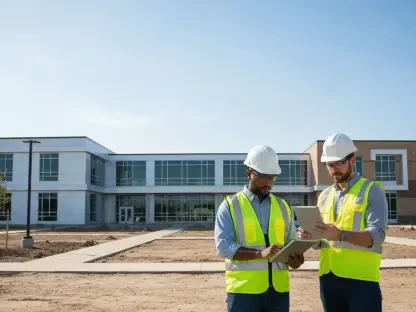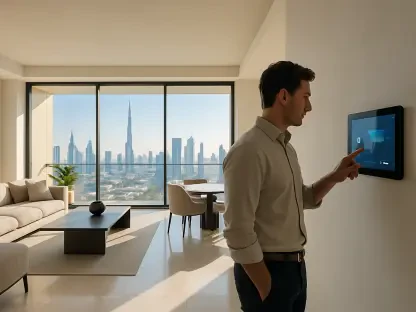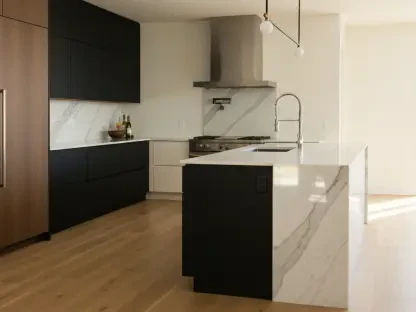The U.S. market for intelligent building automation technologies is on the brink of a transformative leap, poised to redefine how buildings function and contribute to a sustainable future. A recent comprehensive report by a leading market research firm projects this industry to skyrocket from a valuation of USD 28.90 billion in 2024 to an impressive USD 75.44 billion by 2034, achieving a compound annual growth rate (CAGR) of 10.14% over the forecast period from 2025 to 2034. This remarkable growth is driven by an escalating demand for energy-efficient solutions, the rapid development of smart infrastructure, and the integration of advanced technologies such as the Internet of Things (IoT) and artificial intelligence (AI). These innovations are not merely upgrades but essential tools that optimize heating, ventilation, and air conditioning (HVAC) systems, lighting controls, and security measures across commercial, residential, and industrial sectors. The push for reduced operational costs, enhanced safety, and improved occupant comfort is reshaping the landscape of building management. As urbanization accelerates and environmental concerns mount, the question arises: what are the key forces propelling this market forward, and what obstacles must be navigated to sustain this momentum?
Forces Driving Market Expansion
The momentum behind the U.S. intelligent building automation market stems largely from a pressing need to address energy efficiency and environmental sustainability. With businesses and policymakers increasingly focused on minimizing carbon emissions, smart systems that regulate energy consumption through optimized HVAC and lighting solutions have become vital. These technologies enable buildings to consume only what is necessary, significantly cutting down on waste. The drive is further amplified by smart city initiatives and green building certifications like LEED, which encourage the adoption of automation to meet stringent environmental standards. This alignment with broader societal goals positions the market for sustained growth as more stakeholders recognize the value of intelligent systems in achieving long-term ecological benefits.
Beyond sustainability, regulatory support and urban development trends play a pivotal role in market expansion. Government policies and incentives aimed at promoting energy-efficient practices are creating a conducive environment for businesses to invest in automation technologies. Urban centers, where smart infrastructure projects are often prioritized, are seeing a surge in demand for systems that integrate seamlessly with city-wide sustainability goals. However, challenges such as the high initial costs of implementation can pose barriers, particularly for smaller enterprises or residential applications. Despite these hurdles, the promise of reduced operating expenses and compliance with environmental mandates continues to drive interest and investment across various sectors.
Technological Advancements Shaping the Industry
At the core of this market’s evolution lies a wave of technological innovation, with IoT and AI leading the transformation of building automation. These advancements enable predictive maintenance, allowing systems to anticipate failures before they occur, and deliver personalized experiences for occupants through adaptive lighting and temperature controls. For instance, smart thermostats can learn usage patterns and adjust settings to maximize efficiency, while cloud-based analytics provide building managers with real-time insights to streamline operations remotely. This convergence of technology is not just enhancing functionality but fundamentally altering how built environments interact with their users, paving the way for smarter, more responsive spaces.
Additionally, the industry is witnessing a trend toward sectoral diversification, with commercial properties taking the lead due to their scale and potential for significant cost savings. However, the residential sector is gaining ground as consumer interest in smart home solutions grows, driven by the appeal of convenience and energy savings. Industrial applications are also on the rise, with automation optimizing manufacturing processes and facility management. The collaborative efforts among key players through partnerships and mergers further fuel innovation, as companies pool resources to develop cutting-edge solutions. This dynamic interplay of technology and market trends underscores the robust potential for growth and adaptation within the intelligent building automation landscape.
Competitive Dynamics and Regional Insights
The competitive environment within the U.S. intelligent building automation market is marked by intense rivalry among established giants such as ABB Limited, Johnson Controls, Schneider Electric, and Honeywell International. These industry leaders are not merely competing on pricing but are heavily investing in innovation, launching new products, and forming strategic alliances to expand their market presence. Analysis through frameworks like Porter’s Five Forces reveals high barriers to entry due to substantial upfront costs and the need for specialized expertise, though nimble startups with disruptive solutions are beginning to carve out niches. This blend of established dominance and emerging competition creates a vibrant, evolving market structure.
Geographically, the adoption of intelligent building automation varies across the U.S., with urban hubs in states like California and New York leading the charge. These areas benefit from significant investments in smart city projects and dense populations that amplify the need for efficient infrastructure. Meanwhile, industrial regions are experiencing growth as automation becomes integral to enhancing operational efficiency in manufacturing facilities. Local policies and demographic trends heavily influence demand, with certain states prioritizing sustainability initiatives that further accelerate adoption. This regional diversity highlights the importance of tailored strategies to address specific market needs and regulatory landscapes, ensuring that growth opportunities are maximized across different areas.
Future Pathways and Reflections
Looking back, the journey of the U.S. intelligent building automation market reflected a profound shift toward integrating technology with sustainability. The market’s valuation had already shown promising growth, driven by a collective commitment to energy efficiency and smart infrastructure. Challenges like high installation costs and cybersecurity risks were acknowledged as persistent hurdles, yet the industry demonstrated resilience through innovation and supportive policies. The competitive landscape, dominated by major players while welcoming new entrants, had set a foundation for continuous advancement.
Moving forward, stakeholders are encouraged to focus on scalable solutions that address cost barriers, making automation accessible to a broader audience. Strengthening cybersecurity measures has become imperative to safeguard increasingly connected systems. Collaboration between technology providers, policymakers, and end-users emerges as a critical step to align innovations with regulatory and societal needs. By prioritizing research and development, the industry can unlock further potential, ensuring that intelligent building automation continues to evolve as a cornerstone of modern, sustainable living. These actionable strategies offer a roadmap for navigating the complexities of a rapidly growing market, fostering an environment where technology and environmental goals can harmoniously coexist.
